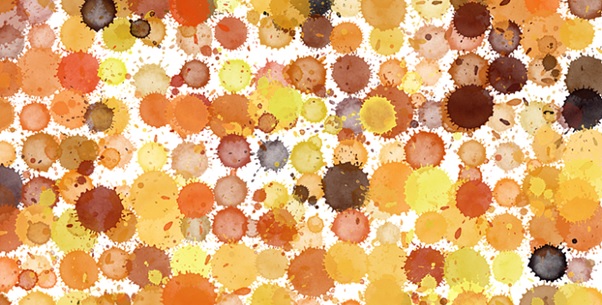
- Python Pillow 教程
- Python Pillow - 首頁
- Python Pillow - 概述
- Python Pillow - 環境設定
- 基本影像操作
- Python Pillow - 影像處理
- Python Pillow - 調整影像大小
- Python Pillow - 翻轉和旋轉影像
- Python Pillow - 裁剪影像
- Python Pillow - 為影像新增邊框
- Python Pillow - 識別影像檔案
- Python Pillow - 合併影像
- Python Pillow - 剪下和貼上影像
- Python Pillow - 滾動影像
- Python Pillow - 在影像上新增文字
- Python Pillow - ImageDraw 模組
- Python Pillow - 合併兩張影像
- Python Pillow - 建立縮圖
- Python Pillow - 建立水印
- Python Pillow - 影像序列
- Python Pillow 顏色轉換
- Python Pillow - 影像顏色
- Python Pillow - 使用顏色建立影像
- Python Pillow - 將顏色字串轉換為 RGB 顏色值
- Python Pillow - 將顏色字串轉換為灰度值
- Python Pillow - 透過更改畫素值來更改顏色
- 影像處理
- Python Pillow - 降噪
- Python Pillow - 更改影像模式
- Python Pillow - 影像合成
- Python Pillow - 使用 Alpha 通道
- Python Pillow - 應用透視變換
- 影像濾鏡
- Python Pillow - 為影像新增濾鏡
- Python Pillow - 卷積濾鏡
- Python Pillow - 模糊影像
- Python Pillow - 邊緣檢測
- Python Pillow - 浮雕影像
- Python Pillow - 增強邊緣
- Python Pillow - 銳化蒙版濾鏡
- 影像增強和校正
- Python Pillow - 增強對比度
- Python Pillow - 增強銳度
- Python Pillow - 增強顏色
- Python Pillow - 校正色彩平衡
- Python Pillow - 去噪
- 影像分析
- Python Pillow - 提取影像元資料
- Python Pillow - 識別顏色
- 高階主題
- Python Pillow - 建立動畫 GIF
- Python Pillow - 批次處理影像
- Python Pillow - 轉換影像檔案格式
- Python Pillow - 為影像新增填充
- Python Pillow - 顏色反轉
- Python Pillow - 使用 NumPy 進行機器學習
- Python Pillow 與 Tkinter BitmapImage 和 PhotoImage 物件
- Image 模組
- Python Pillow - 影像混合
- Python Pillow 有用資源
- Python Pillow - 快速指南
- Python Pillow - 函式參考
- Python Pillow - 有用資源
- Python Pillow - 討論
Python Pillow - ImageChops.add_modulo() 函式
PIL.ImageChops.add_modulo 函式用於新增兩張影像,而不裁剪結果。與 add() 函式不同,該函式不會裁剪超過最大值 (MAX) 限制的值,而是進行迴圈運算,類似於模運算。
以下公式給出了此運算的數學表示:
$$ \mathrm{out\:=\:((image1\:+\:image2)\%\:MAX) }$$
與 ImageChops.add() 函式不同,此運算是可逆的,這意味著可以根據結果重建原始畫素值。
語法
以下是該函式的語法:
PIL.ImageChops.add_modulo(image1, image2)
引數
以下是該函式引數的詳細資訊:
image1 - 這是要新增到另一張影像的第一個輸入影像。
image2 - 這是要新增到第一張影像的第二個輸入影像。
返回值
此函式返回 Image 物件。
示例
示例 1
在此示例中,使用 NumPy 陣列建立兩個隨機 RGB 影像 (image1 和 image2)。然後應用 ImageChops.add_modulo() 函式,以檢視在執行模加運算後,兩個影像的畫素值如何在輸出影像中表示。
from PIL import Image, ImageChops
import numpy as np
# Create two random RGB images
image1 = Image.fromarray(np.array([(235, 64, 3), (255, 0, 0), (255, 255, 0), (255, 255, 255), (164, 0, 3)]), mode="RGB")
print("Pixel values of image1 at (0, 0):", image1.getpixel((0, 0)))
image2 = Image.fromarray(np.array([(255, 14, 3), (25, 222, 0), (255, 155, 0), (255, 55, 100), (180, 0, 78)]), mode="RGB")
print("Pixel values of image2 at (0, 0):", image2.getpixel((0, 0)))
# Add the two images without clipping the result
result = ImageChops.add_modulo(image1, image2)
print("Pixel values of the result at (0, 0) after add_modulo:", result.getpixel((0, 0)))
輸出
Pixel values of image1 at (0, 0): (235, 0, 0) Pixel values of image2 at (0, 0): (255, 0, 0) Pixel values of the result at (0, 0) after add_modulo: (234, 0, 0)
示例 2
在此示例中,ImageChops.add_modulo() 函式用於兩個 JPEG 影像檔案,以新增影像而不裁剪結果。
from PIL import Image, ImageChops
# Open two image files
image1 = Image.open('Images/TP logo.jpg')
image2 = Image.open('Images/pillow-logo-S.jpg')
# Add the two images without clipping the result
result = ImageChops.add_modulo(image1, image2)
# Display the input and resulting images
image1.show()
image2.show()
result.show()
輸出
輸入影像 1

輸入影像 2

輸出影像

示例 3
這是一個使用 ImageChops.add_modulo() 函式對兩個 PNG 影像檔案新增影像而不裁剪結果的示例。
from PIL import Image, ImageChops
# Open two image files
image1 = Image.open('Images/ColorDots.png')
image2 = Image.open('Images/pillow-w.png')
# Add the two images without clipping the result
result = ImageChops.add_modulo(image1, image2)
# Display the input and resulting images
image1.show()
image2.show()
result.show()
輸出
輸入影像 1

輸入影像 2

輸出影像

python_pillow_function_reference.htm
廣告